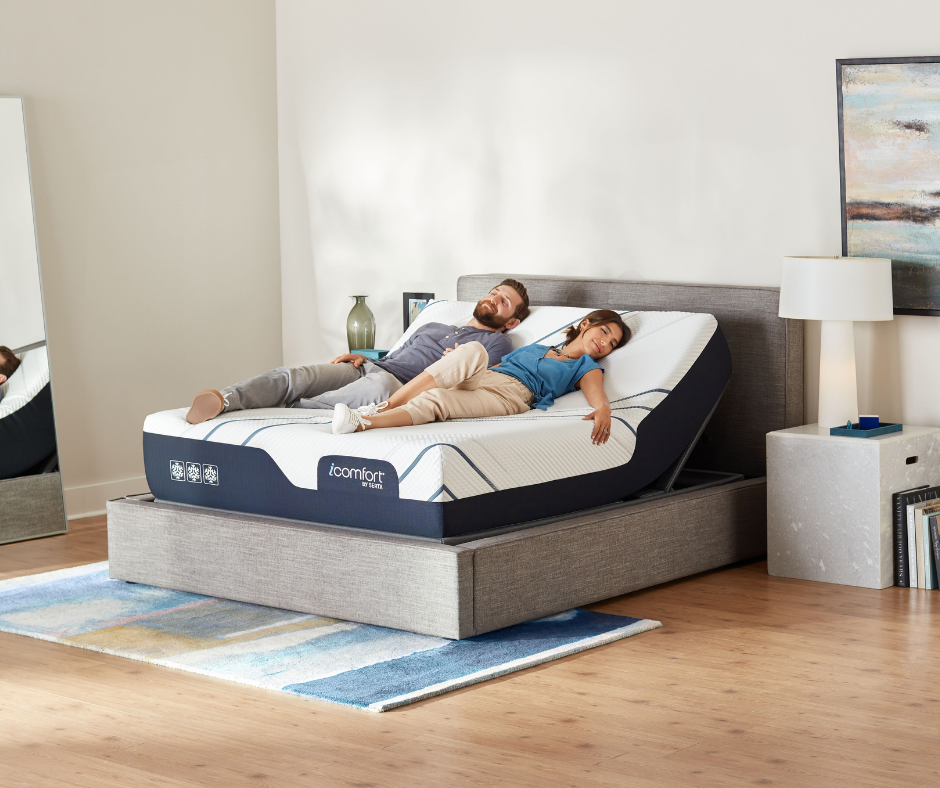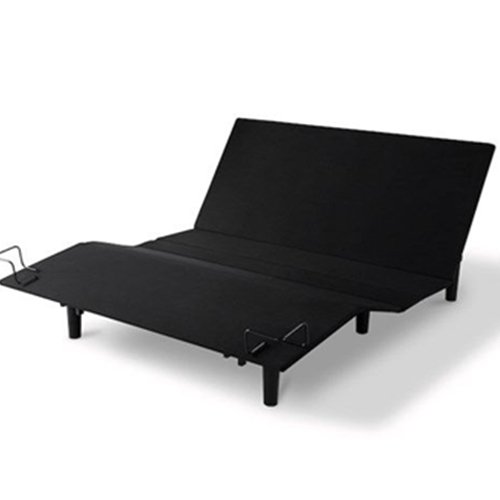It is widely recognized that an old or poor quality mattress can lead to and aggravate health  conditions including back problems and poor sleep habits. The proper mattress will allow the spine to rest and rejuvenate during the night and can improve your overall wellness.
conditions including back problems and poor sleep habits. The proper mattress will allow the spine to rest and rejuvenate during the night and can improve your overall wellness.
There are several mattresses we highly recommend for help in healing low back problems.The old rule “firm is better” does not necessarily hold true today. Many people now prefer pillowtop mattresses, yet we do not recommend them for long term back support as they tend to soften more as time goes on.
Several of our Serta models are specially designed to relieve pressure points and are a source of relief for fibromyalgia and arthritis patients.With the wide variety of mattress choices and support systems on the market today, it is crucial to do your homework and be sure to work with a mattress expert who is highly trained in understanding your health needs. Matching your sleep style to the best possible mattress choice will improve your health and wellness.
According to a recent Oklahoma State University study, a new mattress provided sleepers with significant improvements in their sleep and general health, including*:
70.8% in sleep comfort
62.0% in sleep quality
55.3% in back pain
50.7% in spine stiffness
*As compared to sleeping on a mattress five years old or older.
How many hours do we spend in bed?
An average person spends 26 years of their life sleeping! That is 9,490 days or 227,760 hours. It is also estimated that the average person spends 7 hours just trying to fall asleep. Tacking the 7 years it takes us to fall asleep onto the 26 years we spend actually sleeping means we spend 33 years or 12,045 days in bed. Don’t spend 33 years of your life with back pain or poor sleep because of your mattress. Make sure your mattress is a good one and make those 33 years count!
Our habits of watching tv from bed
Most people tend to end the day with a TV show or program before bed. To be exact, 2/3 of people aged 30-64 and 1/2 of people aged 13-29 watch TV within an hour of going to bed.
Although watching TV is a relaxing way to end the day before dozing off it is actually harmful to your sleep cycle. For instances, if you forget to turn the TV off, your sleep can be interrupted by a sudden loud noise. TVs also emit blue-light, which is known to block melatonin production, a hormone that regulates your sleep schedule. It is often recommended to watch TV 30 minutes before turning the lights off and trying to fall asleep to ensure optimal sleep quality.
How do adjustable beds affect our sleeping and lounging?
Adjustable beds provide numerous benefits to your sleeping and lounging. Here are five reasons why you may want to consider purchasing one:

- Help Lower Back Pain: By propping yourself up with the use of an adjustable mattress you are taking the pressure off of your lower back. With that, choosing an electric powered adjustable mattress helps you to gage the exact position that is most comfortable for you.
- Helps Prevent Snoring: Having your head elevated just 7 degrees higher will prevent snoring. The elevation opens your respiratory passageway making it easier for you or your partner to breath.
- Asthma: Sleeping in an elevated position can help people with asthma. The elevation opens your respiratory tract, reducing stress on your lungs.
- Arthritis: Elevated beds redistributes pressure across your body while increasing blood flow and circulation. With that, memory foam mattresses contour the shape of your body rather than creating pressure points on your hips and shoulders.
- Heartburn: Elevated heads prevents acid from traveling up the esophagus, which also aids in digestion.
The importance of quality sleep
 Sleep is a necessity to life just like food and water, so making sure you have good quality sleep is imperative. Missing as little as 1.5 hours of the recommended 8 hours can have a major impact on anyone’s alertness. With that, poor sleep is linked to weight gain as it affects hormones that regulate appetite – good sleepers tend to eat fewer calories. Further, sleep affects glucose metabolism and type 2 diabetes risk. In just a short 6 days, lack of sleep causes pre-diabetes in healthy adults and a continuation of poor sleep is linked to type 2 diabetes.
Sleep is a necessity to life just like food and water, so making sure you have good quality sleep is imperative. Missing as little as 1.5 hours of the recommended 8 hours can have a major impact on anyone’s alertness. With that, poor sleep is linked to weight gain as it affects hormones that regulate appetite – good sleepers tend to eat fewer calories. Further, sleep affects glucose metabolism and type 2 diabetes risk. In just a short 6 days, lack of sleep causes pre-diabetes in healthy adults and a continuation of poor sleep is linked to type 2 diabetes.
Poor sleep is also linked to depression – 90% of people with depression complain about poor sleep. There is also a strong correlation between improved immune function and sleep quality – people who sleep less than 7 hours are 3X more likely to develop a cold. Poor sleep has also been linked to increased inflammation, causing inflammatory bowel diseases and an increased risk of disease reoccurrence.
There has also been a link to poor sleep quality and increased risk of heart disease and stroke – making sure you are getting at least 7-8 hours decreases this risk dramatically. Lastly, a quality sleep also improves concentration and productivity as well as increased emotional intelligence– problem-solving skills are enhanced as well as memory, social skills and the ability to recognize people’s emotional expressions.
How do you find the correct size and firmness of mattress?
Often the comfort of your mattresses is directly correlated with the softness or firmness of your mattress. To get technical, the firmness relates to the uppermost layer of a bed, while the support is in the middle to lower layers of the mattress. This is important to note because firmer mattresses do not automatically mean more support.
When trying to decide what firmness is right for you there a few things to consider:
- Spinal Alignment: When you are sleeping your muscles are relaxed so your body relies on the mattress to keep your spine aligned. Since your spine has a natural curve, your mattress needs to support this. It is important to choose a mattress that provides adequate support while avoiding the creation of pressure points.
- Sleeping Position: Depending on how you sleep shows where most of the pressure is on your body. For instance, if you are a side sleeper you need a softer mattress, so the mattress can conform to pressure points – conforming to shoulder and hips as well as your arm that gets tucked in while sleeping on your side. If you sleep on your stomach you need a firmer mattress to keep your hips and pelvis from sinking below your shoulders, relieving that pressure point. Lastly, if you are a back sleeper you have the most range – pressure is more evenly spread among your body. If you have trouble picking and you’re a back sleeper, a medium firmness is your best bet.
- Partner: Depending on how your partner sleeps you may need a mattress with multiple varieties of firmness.
- Weight: Your weight determines on how much pressure is being directed to pressure points. When thinking about mattresses, softer beds may not be the best option for customers on the heavier side as they might sink too deep into the mattress. Further, firmer mattresses might not be the best choice for customers on the lighter side as they may feel as though they are being pushed on top of the mattress.
What is the difference between gel and hybrid flippable mattresses?
Hybrid Mattress: Blends foam and spring mattresses. There tends to be an added support from the pocket coils, with a comfortable pressure point relieving surface.
Pros: Best of both world with conformity and support.
Cons: Beware of foams being used as there may be some sag occurring due to poor quality of material.
Gel: these mattresses are newcomers in the mattress world. They are known to retain less heat than normal mattresses and tend to be more responsive than memory foam mattresses.
Pros: Cooler sleeping surface and a more responsive surface
Cons: Similar to a foam mattress as they are made of a synthetic blend of chemicals.
How do you decide on children’s mattresses by age and weight?
When deciding on a bed for your child age is important as this can affect weight and height. As they get older, they will start to get heavier and taller. However, at a young age they are smaller, so you may want to consider getting a softer, smaller bed, like a twin. When you are small and light, firmer beds tend to give people the feeling like they are being pushed on top of the mattress. As your child gets older, their preferences might change, and they might want to consider a firmer bed, but this also depends on sleep position. Also, as your child gets older they may require a larger bed as they are growing – a twin bed might not cut it anymore.
